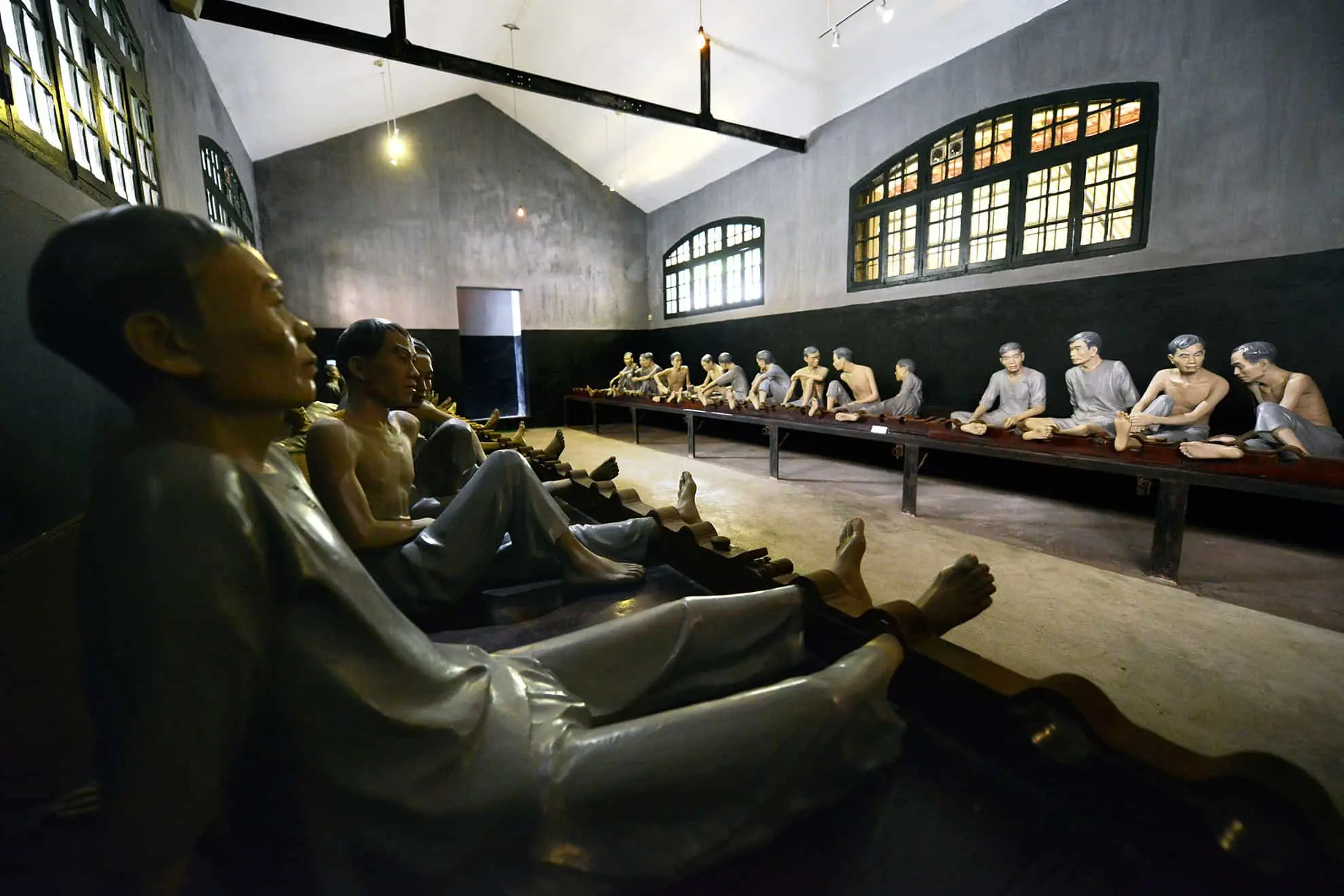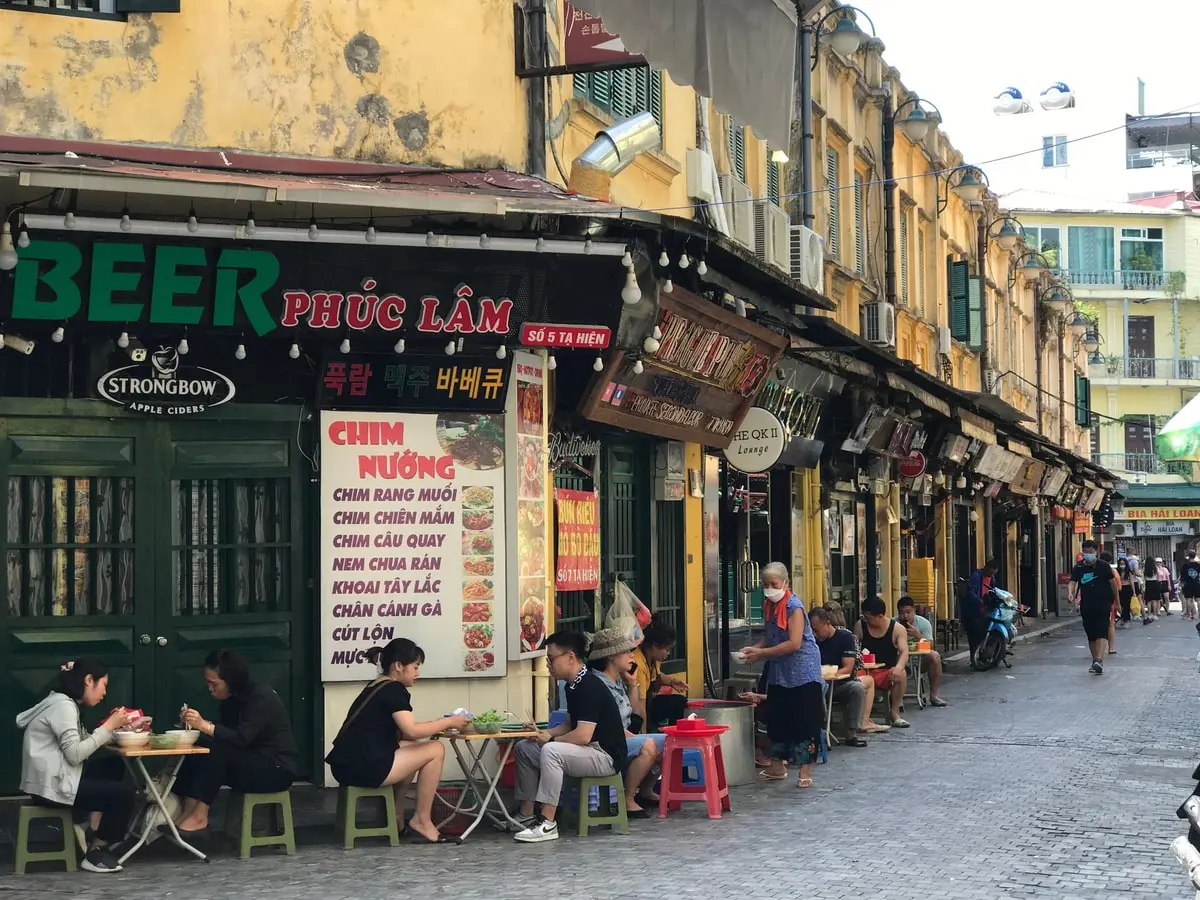North Vietnam stands as a significant entity in 20th-century history. Its formal name was the Democratic Republic of Vietnam (DRV). It existed from 1945 until 1976. Understanding North Vietnam is crucial to understanding the Vietnam War, the dynamics of the Cold War in Southeast Asia, and the modern nation of Vietnam. This article, brought to you by EssentialVietNamtravel.com, delves into the history, identity, key players, and lasting legacy of North Vietnam. We aim to provide a clear, factual account based on historical events.
Our goal is to help you learn the history of North Vietnam and define this important historical state. We will cover its formation, its defining characteristics, its differences from South Vietnam, its symbols, its pivotal role in the major conflict known as the Vietnam War, its leadership under Ho Chi Minh, and its ultimate achievement of unifying Vietnam.
The History of North Vietnam: Formation and Key Events
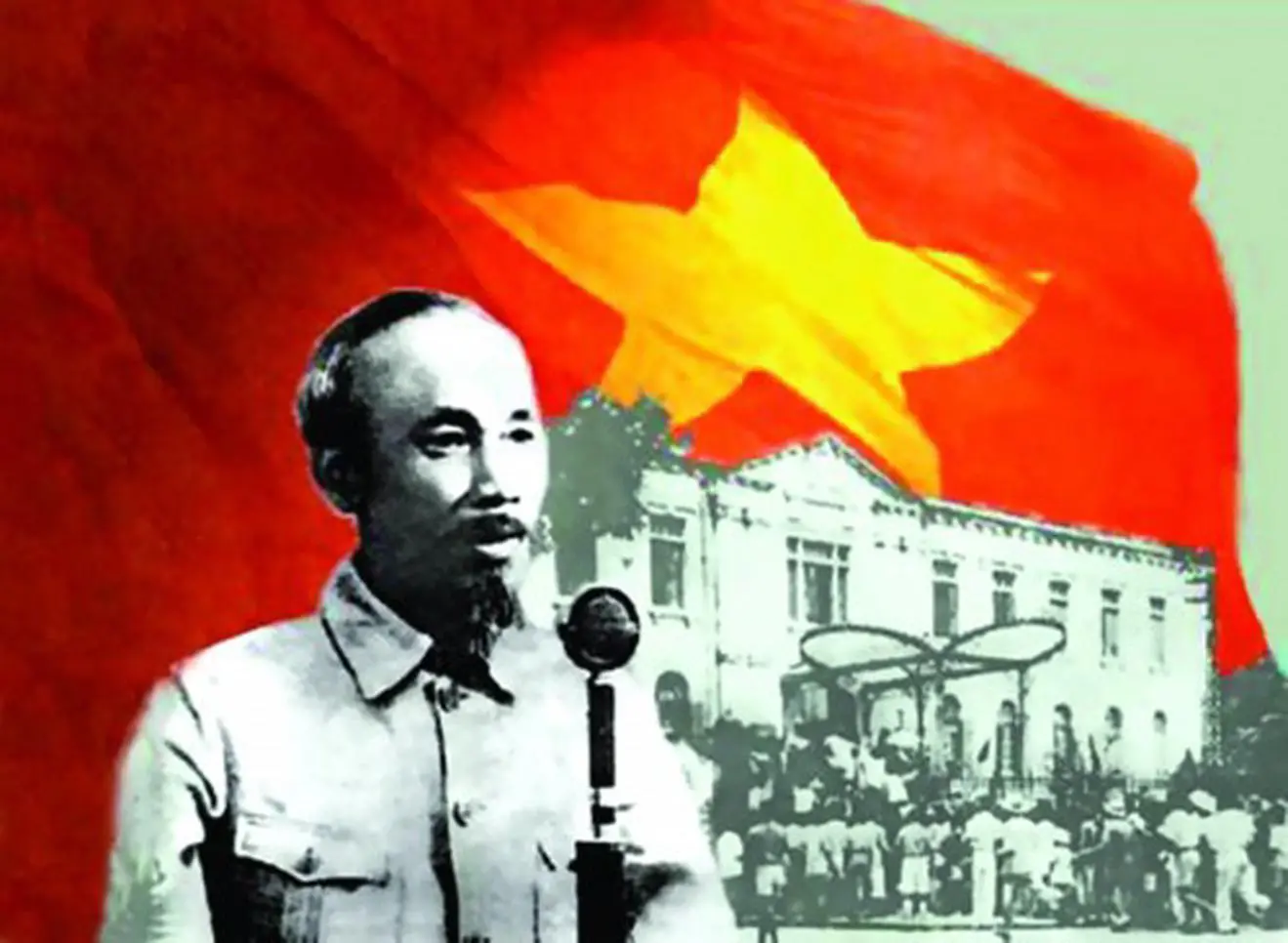
The story of North Vietnam begins long before its official declaration. It emerges from the complex tapestry of Vietnamese history, marked significantly by French colonialism. The effect French colonialism had was profound, suppressing Vietnamese sovereignty but also fueling a powerful sense of Vietnamese Nationalism. For decades, various resistance movements sought independence. The most successful of these was the Viet Minh. Founded in 1941 and led by Ho Chi Minh, the Viet Minh aimed to liberate Vietnam from both French and Japanese occupation during World War II. Ho Chi Minh skillfully blended nationalist aspirations with communist ideology. This combination proved effective in mobilizing popular support.
Following Japan’s surrender in August 1945, the Viet Minh seized the opportunity. Ho Chi Minh declared the independence of the Democratic Republic of Vietnam in Hanoi on September 2, 1945. This marked the initial establishment of the state that would become known as North Vietnam. However, France was unwilling to relinquish its colony. This led to the outbreak of the First Indochina War in 1946. The Viet Minh administration fought a protracted and brutal war against the French Union forces. This period represented nation building under conflict.
The Viet Minh employed sustained guerilla warfare tactics effectively against a technologically superior enemy. The conflict culminated in the decisive Victory Dien Bien Phu in 1954. This key battle, masterminded by General Vo Nguyen Giap, resulted in a catastrophic defeat for the French forces. It shocked the Western world and forced France to negotiate an end to the conflict.
The subsequent Geneva Accords of 1954 provisionally divided Vietnam at the 17th parallel. The Democratic Republic of Vietnam, under Ho Chi Minh and the Lao Dong Party, controlled the territory north of the parallel. The State of Vietnam (later the Republic of Vietnam, or South Vietnam) controlled the territory to the south. The accords called for national elections in 1956 to reunify the country, but these elections never happened. The United States and the Saigon government feared Ho Chi Minh would win overwhelmingly.
Thus, Vietnam remained divided, setting the stage for the Second Indochina War, more commonly known as the Vietnam War. In its early years, North Vietnam focused on consolidating power and implementing socialist reforms. A controversial Key Policy was Land Reform, aimed at redistributing land from landlords to peasants, though it was carried out with significant violence and upheaval. The History of North Vietnam war was just beginning, transitioning from fighting the French to confronting a new opponent in the South, backed by the United States. The foundation laid by the Viet Minh administration was critical for the DRV’s survival and future struggles.
Defining North Vietnam: The Democratic Republic of Vietnam in Hanoi

To define the North Vietnam entity accurately, we must look at its formal structure and characteristics. Its Official Name was the Democratic Republic of Vietnam (DRV). This name was proclaimed in 1945 and remained until reunification in 1976. The Capital city was Hanoi. Hanoi served not just as the administrative center but also as the symbolic heart of the revolution and the resistance against foreign powers.
The Hanoi regime directed the political and military strategy of the state throughout its existence. Geographically, North Vietnam occupied the territory of Northern Vietnam, north of the 17th parallel established by the Geneva Accords. Its location placed it strategically adjacent to China, which became a significant supporter.
The political system of North Vietnam was fundamentally a Communist state. Power was centralized under the absolute control of the Lao Dong Party (Vietnam Workers’ Party), the Ruling Party. This constituted a One-party rule system, allowing no political opposition. The dominant Ideology was Communism, specifically tailored to Vietnamese circumstances through Ho Chi Minh Thought ideology. This ideology blended Marxist-Leninist principles with Vietnamese Nationalism, Confucian traditions, and Ho Chi Minh’s personal philosophies. It emphasized national liberation, social revolution, and the leadership role of the Communist party.
Economically, North Vietnam operated under a Command Economy. The state controlled major industries, collectivized agriculture, and directed economic planning. The North Vietnam economy 1960s was heavily geared towards supporting the war effort in the South while also attempting socialist construction. It relied significantly on aid from its Major Ally, the Soviet Union, and China. This Sino-Soviet relations balancing act was a key feature of its foreign policy.
The Population Estimate 1965 was around 19 million people. This population endured significant hardship and total war mobilization to support the state’s objectives. North Vietnam positioned itself within the Communist Bloc during the Cold War, aligning with other socialist states against the perceived imperialism of the West. Its existence and struggle were central events in Communism Southeast Asia and the broader history of Asia.
Key Differences: North Vietnam versus South Vietnam
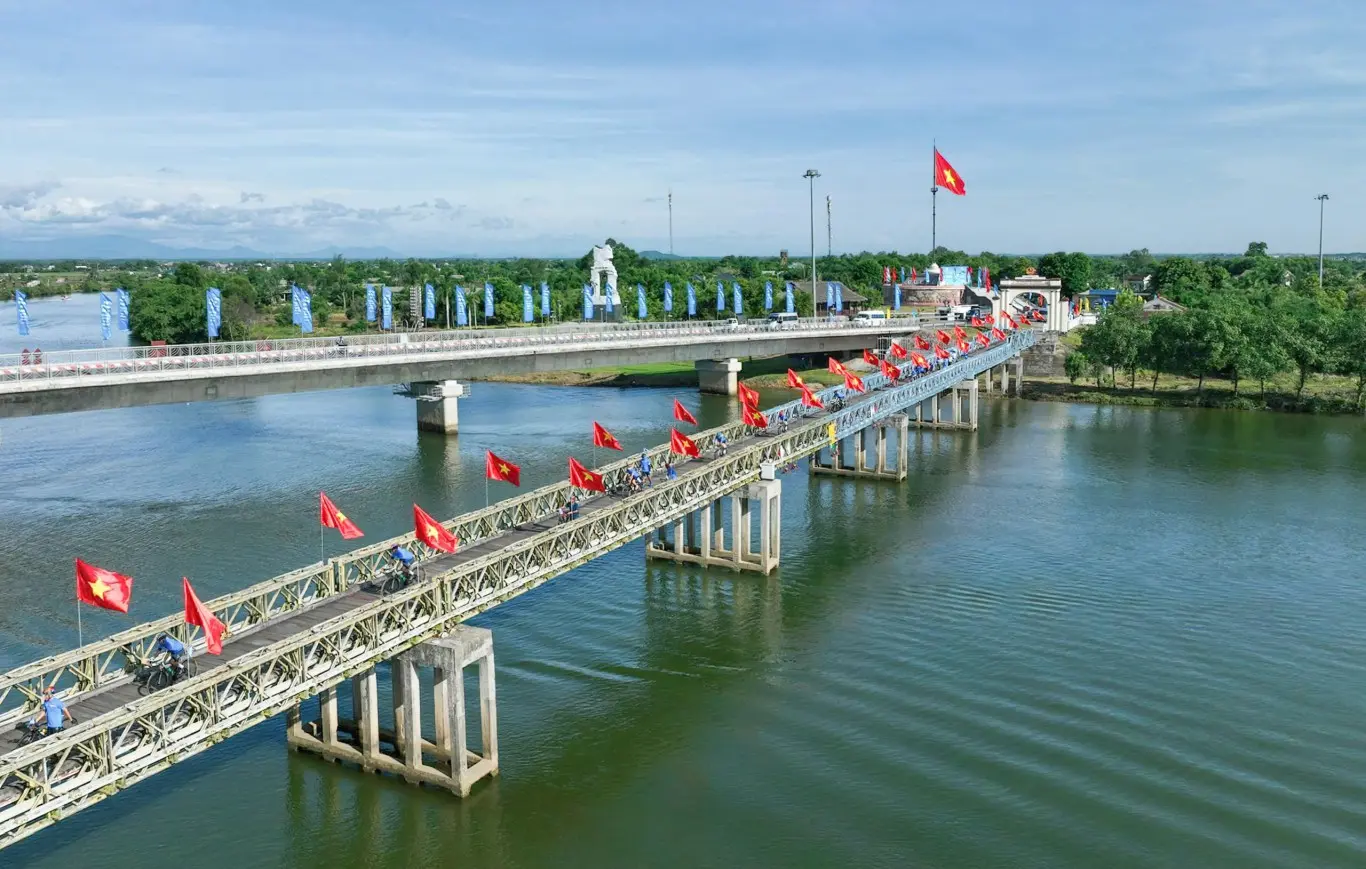
Understanding North Vietnam requires comparing it directly with its Main Opponent, South Vietnam. The division created two distinct Vietnamese states with opposing ideologies, political systems, and international alliances, forming the crux of the Vietnam War. North Vietnam, officially the Democratic Republic of Vietnam with its capital in Hanoi, was a Communist state guided by the Lao Dong Party. Its primary goal was the reunification of Vietnam under its rule. It received substantial military and economic support from the Soviet Union and China, its Major Ally group within the Communist Bloc. Its ideology combined Communism and strong Vietnamese Nationalism.
In contrast, South Vietnam, officially the Republic of Vietnam (RVN) after 1955, had its capital in Saigon. It was staunchly Anti-communism and was founded with the aim of creating a non-communist, independent state in the southern part of the country. The RVN received massive military and economic support from the United States and its allies. Its political system was nominally democratic but often characterized by authoritarian rule and instability. Leaders like Ngo Dinh Diem and later Nguyen Van Thieu headed governments that struggled for legitimacy and popular support against the backdrop of the ongoing insurgency and war.
The core difference lay in their fundamental political and economic visions. North Vietnam pursued a path of socialist revolution and a command economy. South Vietnam attempted to build a capitalist economy and maintain close ties with the West. This ideological chasm fueled the conflict, transforming it from a civil war into a major proxy conflict of the Cold War. The North viewed the Saigon government as illegitimate puppets of the United States, while the South viewed the North as aggressors seeking to impose communism on the entire country.
The presence of the United States military became a defining feature of South Vietnam, whereas North Vietnam maintained its independence from direct foreign military basing, though heavily reliant on foreign aid. These stark contrasts defined the struggle and explain why compromise was nearly impossible, leading to decades of war. Comparing North Vietnam South Vietnam reveals the deep divisions that tore the country apart. The Cold War Politics played out intensely on Vietnamese soil.
Identifying North Vietnam: Key Symbols like the Red flag yellow star
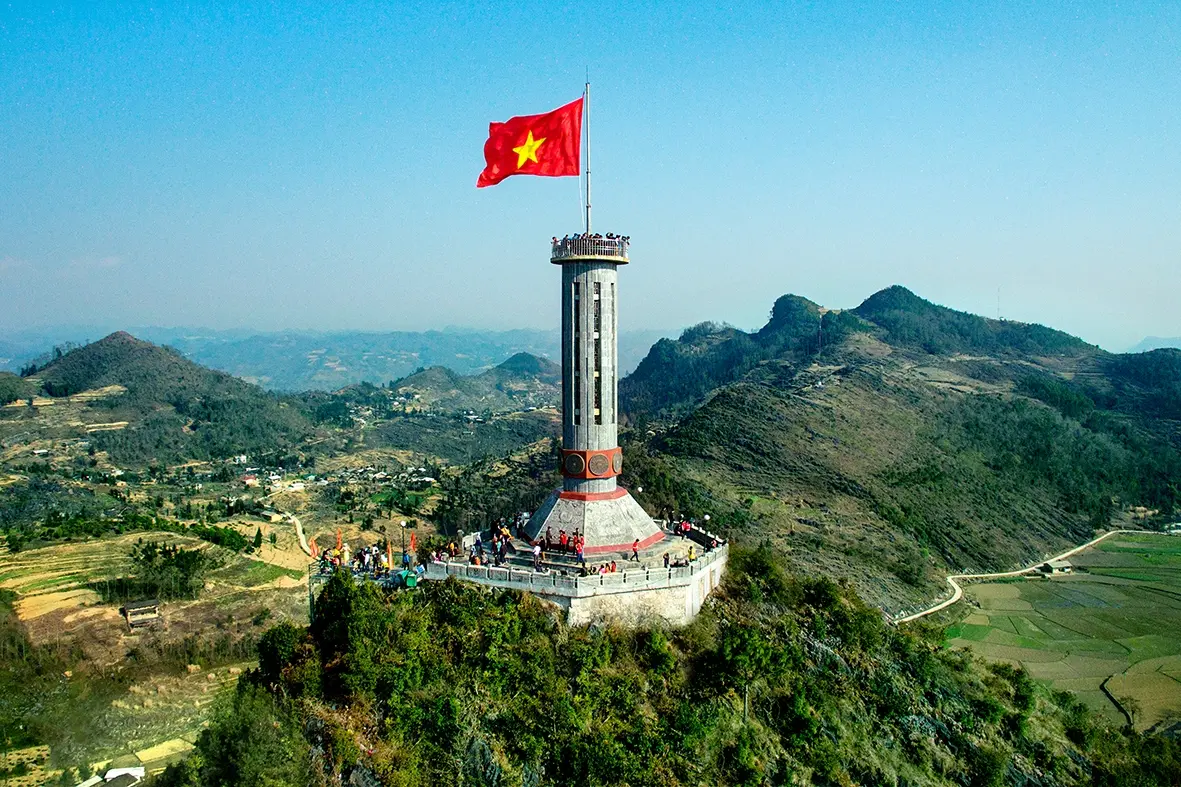
Symbols played a powerful role in representing North Vietnam’s identity, ideology, and struggle. They were crucial for rallying support, asserting legitimacy, and defining the nation both internally and externally. Perhaps the most prominent symbol was the North Vietnamese Flag: the Red flag yellow star. The red background symbolized revolution and bloodshed, while the five-pointed yellow star represented the unity of workers, peasants, intellectuals, soldiers, and merchants under the leadership of the Lao Dong Party.
This flag, originally used by the Viet Minh, became the official flag of the DRV and remains the flag of the unified Socialist Republic of Vietnam today. It is instantly recognizable and strongly associated with the communist government in Hanoi.
Ho Chi Minh himself was arguably the most potent symbol of North Vietnam. Revered as ‘Uncle Ho,’ he embodied Vietnamese Nationalism, the fight for independence against colonial powers, and the aspiration for a unified, socialist Vietnam. His image, his writings (part of Ho Chi Minh Thought ideology), and his life story were constantly invoked to inspire sacrifice and loyalty. Even after his death in 1969, his legacy continued to be a central pillar of the state’s identity and legitimacy. North Vietnam leaders Ho Chi Minh were synonymous with the nation’s cause.
Hanoi, the Capital, served as more than just an administrative center. It was the symbolic heart of resistance, the center of the Hanoi regime’s power, and a representation of Vietnamese culture and history enduring through war. Bombing raids by the United States aimed not only to cripple infrastructure but also to break the symbolic resilience of Hanoi. The People’s Army of Vietnam (PAVN), the official Military force, was another powerful symbol. It represented the nation’s military prowess, its determination to fight against formidable odds (first France, then the US and South Vietnam), and the ideal of the soldier-citizen defending the socialist fatherland.
Images of PAVN soldiers became iconic representations of the North Vietnamese war effort. Finally, the Viet Minh, the precursor organization, remained a potent symbol of the initial struggle for independence, linking the DRV directly to the fight against French colonialism. These symbols collectively helped to forge a strong sense of national identity and purpose within North Vietnam, crucial for sustaining the decades-long conflict. Finding North Vietnam symbols helps understand the values it projected.
Further Reading: Explore More of Vietnam
North Vietnam’s Crucial Role in the Vietnam War with the PAVN
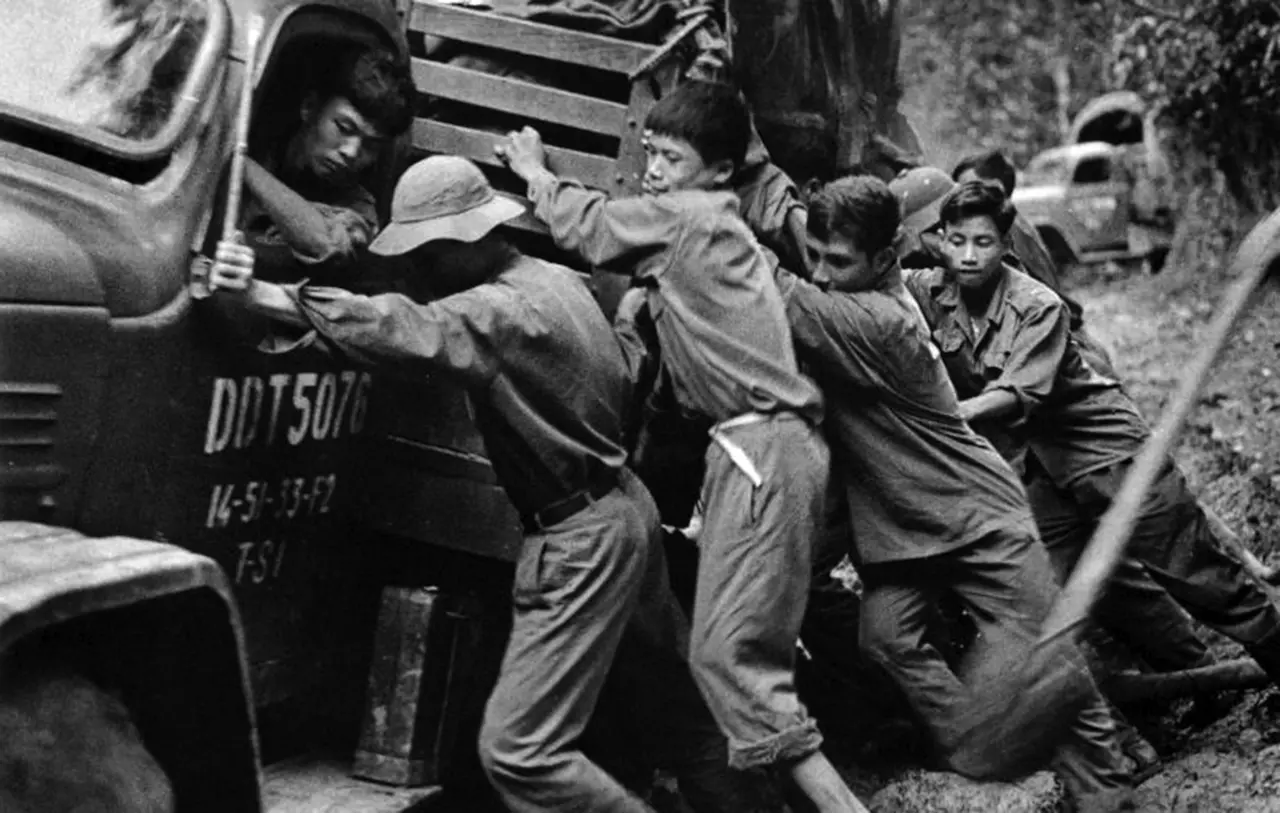
North Vietnam’s involvement was central to the Vietnam War (or the Second Indochina War), the Major Conflict that dominated its existence. The state served as the logistical base, command center, and primary driver for the effort to overthrow the South Vietnamese government and unify the country under communist rule. Its official Military force was the People’s Army of Vietnam (PAVN).
The PAVN, led by brilliant strategists like Key General Vo Nguyen Giap, evolved from a primarily guerilla force during the First Indochina War into a formidable conventional army capable of large-scale operations. The North Vietnam military strategy PAVN involved a combination of tactics. This included continued support for sustained guerilla warfare conducted by the Viet Cong (National Liberation Front, or NLF) in the South, alongside increasing infiltration of PAVN regular troops and large-unit conventional battles.
A critical element of North Vietnam’s strategy was the Ho Chi Minh Trail. This complex network of paths, roads, and tunnels running through neighboring Laos and Cambodia served as the primary logistical artery for supplying troops and equipment to the Viet Cong and PAVN forces operating in South Vietnam.
The Ho Chi Minh Trail logistics represented a monumental feat of engineering and perseverance, constantly bombed by the US but never fully shut down. It demonstrated the North’s commitment and capacity for total war mobilization. The Alliance Viet Cong NLF was crucial; while the NLF maintained a degree of political autonomy, its military efforts were increasingly directed and supplied by Hanoi.
North Vietnam, as a Wartime belligerent, framed the conflict as a continuation of the struggle against foreign domination, first French colonialism and then American intervention. They maintained they fought national liberation war to fulfill the Vietnamese people’s desire for independence and unity. Major offensives, such as the Tet Offensive in 1968, were planned and directed by Hanoi, even if largely carried out by Viet Cong forces initially.
While a military defeat for the communist forces, Tet had a significant political impact in the United States, increasing anti-war sentiment. North Vietnam skillfully managed its relationships with its main allies, the Soviet Union and China, engaging in Sino-Soviet relations balancing to maximize aid while maintaining relative independence. This Dependent external communist aid was vital for sustaining the war effort against the vastly richer United States. Ultimately, North Vietnam’s strategic patience, military capability (PAVN), logistical ingenuity (Ho Chi Minh Trail), and unwavering political will proved decisive. Understanding North Vietnam role war is essential to grasping the entire conflict.
Leadership in North Vietnam: Ho Chi Minh and the Communist Lao Dong Party

The political landscape of North Vietnam was dominated by two interconnected forces: its paramount Leader, Ho Chi Minh, and the Ruling Party, the Lao Dong Party (Vietnam Workers’ Party). Understanding this leadership structure is key to comprehending the state’s actions and ideology. Ho Chi Minh was the undisputed figurehead and ideological guide of North Vietnam until his death in 1969. His Leadership Ho Chi Minh was characterized by charisma, nationalist appeal, and pragmatic application of Communist ideology. He held several key positions, including President, and his influence permeated every aspect of North Vietnamese society.
His writings and speeches formed the basis of Ho Chi Minh Thought ideology, which adapted Marxism-Leninism to Vietnamese conditions, emphasizing national independence alongside socialist revolution. He successfully cultivated an image as a man of the people, dedicated to the nation’s unification and liberation. North Vietnam leaders Ho Chi Minh became the personification of the struggle.
The Lao Dong Party was the instrument through which Ho Chi Minh and the leadership exercised power. Established as the successor to the Indochinese Communist Party, the Lao Dong Party enforced One-party rule, controlling the government, the military (PAVN), and social organizations.
The party’s Politburo made all key decisions regarding war strategy, economic policy, and foreign relations. Figures like Le Duan (who became First Secretary and the de facto leader after Ho’s health declined and especially after his death), Truong Chinh, Pham Van Dong, and Vo Nguyen Giap (Key General and military strategist) were influential members of this collective leadership. The party structure ensured strict discipline and ideological conformity throughout the state apparatus.
The party’s Political system was hierarchical and highly centralized. Its claim to power rested on its role in defeating the French (Legitimate government Vietnam claim) and its commitment to completing the national revolution by unifying the country. The Communist ideology primary driver was clear in its policies, such as the Command Economy and Land Reform, and its alignment with the Soviet Union and China.
While Unified popular support is debated by historians, the party effectively mobilized large segments of the population through a combination of nationalist appeals, ideological indoctrination, and social control mechanisms. The tight integration of Ho Chi Minh’s leadership with the pervasive control of the Lao Dong Party created a resilient and determined political entity capable of waging a protracted war against overwhelming odds.
The Legacy of North Vietnam: Achieving Reunification

The ultimate goal of North Vietnam, pursued relentlessly for decades, was the reunification of the country under its communist leadership. This goal was finally achieved in 1975, marking the end of the Vietnam War and the dissolution of North Vietnam as a separate political entity, leaving a complex and lasting legacy.
The final North Vietnamese offensive began in early 1975. The PAVN, now a highly experienced and well-equipped force, overwhelmed the demoralized and collapsing Army of the Republic of Vietnam (ARVN), whose primary backer, the United States, had withdrawn its combat troops following the Paris Peace Accords of 1973 and significantly reduced aid. The offensive culminated in the Fall of Saigon on April 30, 1975, as North Vietnamese tanks crashed through the gates of the Presidential Palace. This event symbolized the complete victory of North Vietnam and the NLF.
Following the military victory, the political process of Unification Vietnam 1975 began swiftly. On July 2, 1976, the country was formally reunified, and the Socialist Republic of Vietnam was proclaimed, with Hanoi as its capital. North Vietnam, the Democratic Republic of Vietnam, officially ceased to exist, Dissolved 1976, its structures and leadership effectively absorbing the South. This marked the end of a major chapter in Vietnamese history and the conclusion of the long struggle that began with the fight against French colonialism (Decolonization French Indochina).
The legacy of North Vietnam is multifaceted. It is remembered for its unwavering determination, its successful military strategy against powerful adversaries, and its achievement of national unification, a core tenet of Vietnamese Nationalism. Figures like Ho Chi Minh and Vo Nguyen Giap remain national heroes in unified Vietnam. However, the legacy also includes the establishment of a strict One-party rule, a Command Economy that struggled in the post-war years, and the immense human cost of the war.
The experience of North Vietnam profoundly shaped modern Vietnam’s political system, social structure, and Foreign relations. Its history remains a vital Component Vietnamese history and a key case study in Cold War Politics, Communism Southeast Asia, and wars of national liberation. The state that was Preceded By the Viet Minh administration was ultimately Succeeded By the Socialist Republic of Vietnam, carrying forward many aspects of its political and ideological framework.
Planning Your Journey to Vietnam?
Inspired by Vietnam’s rich history? Start planning your own adventure to explore its vibrant culture, stunning landscapes, and historical sites.
Find the best flight deals to Vietnam:
Disclaimer: This historical overview is provided by EssentialVietNamtravel.com for informational purposes. The Vietnam War and the history of North and South Vietnam are complex subjects with diverse perspectives. We aim for factual accuracy based on common historical understanding.If you’re planning a trip to discover these historical sites and more, consider searching for flights.


